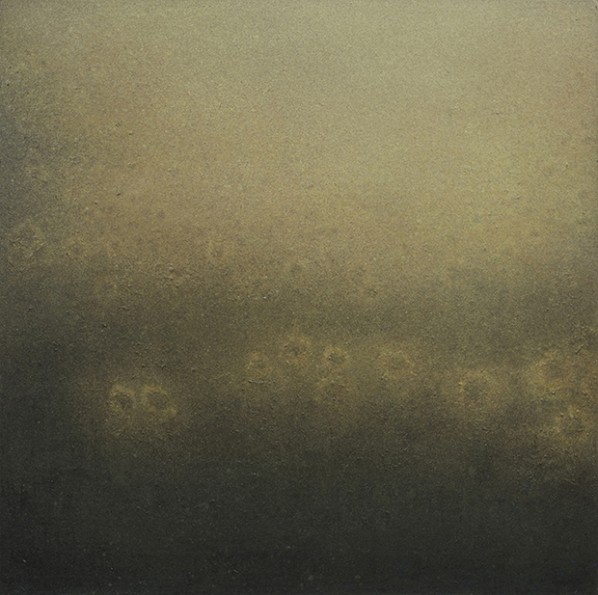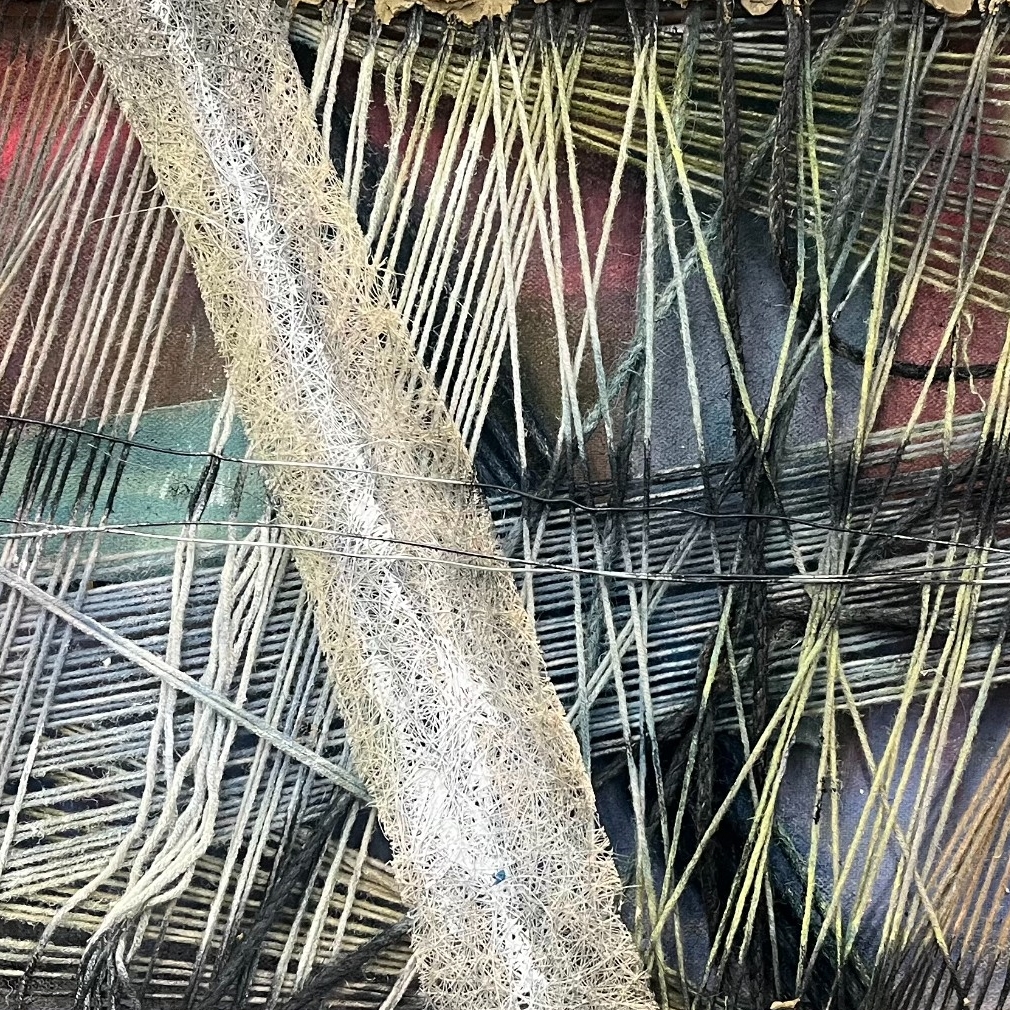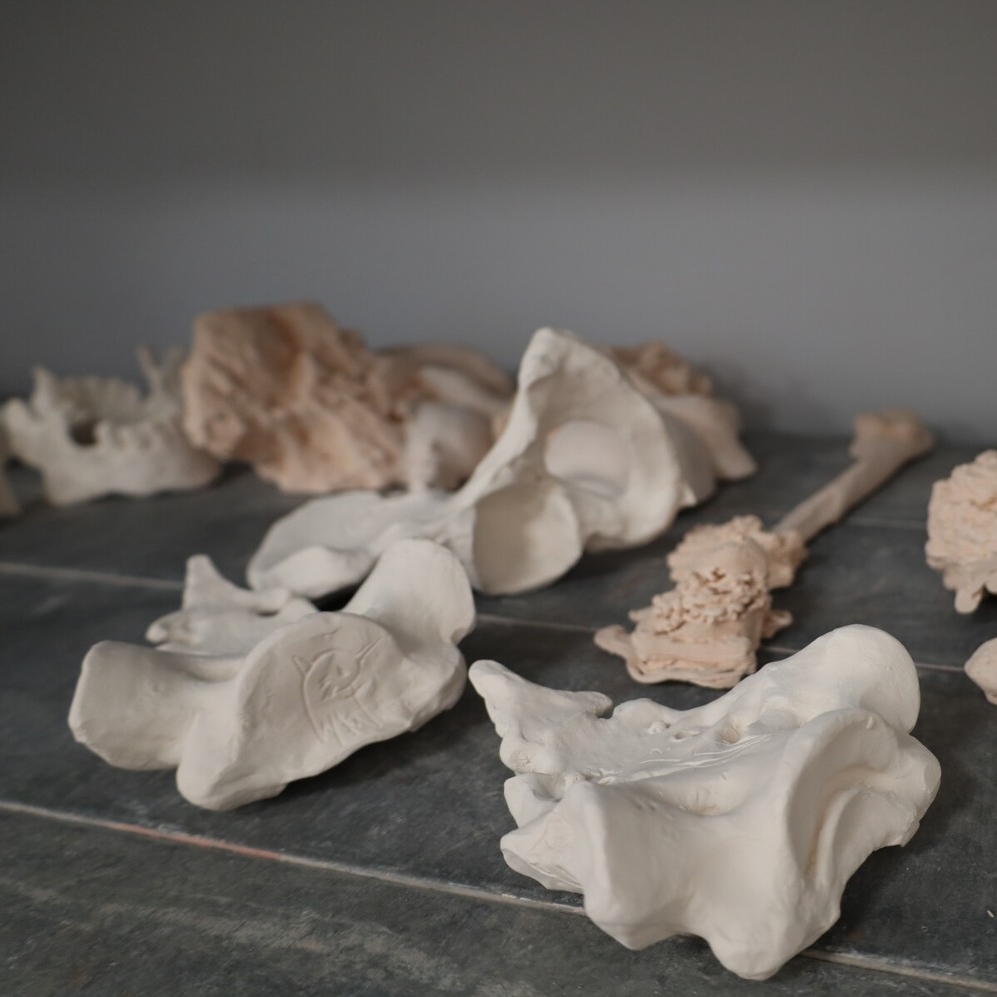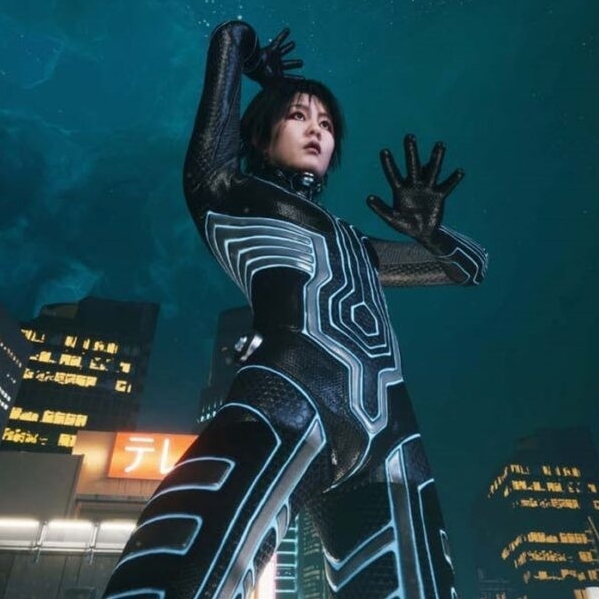
Wang Fengge, Sunflower Sea, 2012; acrylic and oil on canvas, 150x150cm
Born in Shaanxi in 1982, Wang Fengge graduated from the China Central Academy of Fine Arts in 2009 and completed advanced studies from the same institution in 2011. Central to the vision that guides her paintings is a deep respect for classical Chinese brush and ink painting, the medium that has been used to create an extraordinary corpus of landscape and figure paintings for well over a thousand years. While appreciating the profundity of this tradition, however, she has no desire to work in the same manner, choosing instead to investigate how she might achieve the same effects in oil painting, the area of her specialization at the Academy.
She has written that “through incorporating Western modernism and Chinese traditional freehand brushwork, I am trying to enrich the meanings which oil painting can convey. Through the combination of the essential qualities found in Western and Eastern traditions, I want to find a connecting point in my painting in which Western rational structure and Eastern philosophical profundity can be bridged.”
Her paintings of 2012/2013 such as Sunflower Sea and Mirror – Nanhaizi still retain recognizable landscape motifs but she very quickly abandoned these as a distraction. In her paintings since then she has focused on details of landscapes and buildings that she reduces to nearly abstract configurations, her paintings hovering on the borderline between realism and abstraction without ever settling firmly in either camp. Her compositions defy easy classification. What is it that we are seeing? Is it a man-made or a natural form? When recognizable elements do appear, they are bathed in a penumbral light that could be early morning or dusk. This preference for working at the outer limits of perceptibility is the secret of the paintings’ low-key allure.
The stippled surfaces of her canvases consist of multiple layers of closely related hues applied in small touches that at first glance are reminiscent of Pointillism, the 19th century French art movement whose most important exponent was Georges Seurat although there is no evidence that she numbers this short-lived genius among her artistic forbears. Her technique is much less direct than his, each canvas beginning with freely-brushed forms that depart from an arrangement of forms in the visible world. This may be described as her link to Chinese tradition. After being partially obscured by multiple layers of sprayed paint, she then repeats the two-step process, the manual application of pigment being partially obscured by yet further layers of spray, until she achieves the succulent surface she desires.
Through this seamless combination of the manual and mechanical application of paint, she achieves effects that in their mystifying perfection are perfectly suited to the more abstract nature of her concerns, no longer landscapes but concepts such as Passing Through, Fading Density, Unbounded and Retaining. By reducing the thematic content of her works until it is barely perceptible and refusing to call attention to them by the display of painterly bravura or strong, Wang Fengge has arrived at an approach that results in canvases that are haunting in their reticence.
About the exhibition
Date: January 7 – February 6, 2016
Venue: Chambers Fine Art
Courtesy of the artist and Chambers Fine Art, for further information please visit www.chambersfineart.com.




























